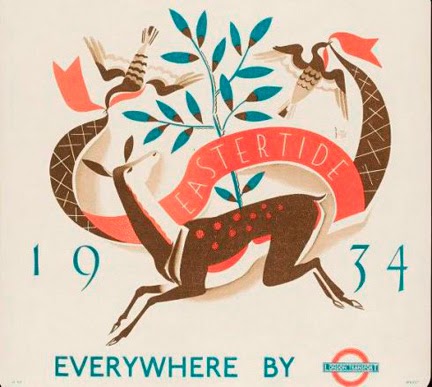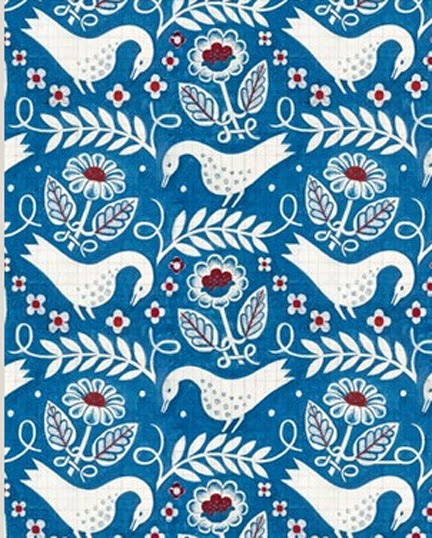Patchwork made of imitation patchwork
in Pennsylvania Dutch style
From 1940 to 1970 the folkloric look was a prominent trend
in American decorating. The Tyrolean-style feedsack above
celebrated Swiss rural costume, frozen in time...
Franz von Defregger
Young Man in Tyrolean Costume, 1872
which was mixed with the Pennsylvania Dutch
nostalgia.
Feedsack
A new generation of artists and collectors who'd grown up with
Pennsylvania Dutch/Tyrolean kitchen curtains began collecting an edgier folkart...
Drawing by Bill Traylor
including art by living artists who became known
as outsider artists.
Painting by Sam Doyle
Textiles with an edge included quilts...
Wool applique quilt dated 1896
...particularly appliqued quilts
Early 20th century applique quilt
Early 20th century applique mat
Hooked rugs also became very collectible.
In the 1980s a new style of quilt appeared, driven by designers with art school backgrounds and a love for naive art. We call the quilt style primitive, using a word that goes back to John Ruskin's term for pre-Renaissance Italian art in 1850.
Spring Has Sprung by Jan Patek
Characteristics of primitive style included out-of-scale imagery, flat color, and simple shapes with asymmetrical forms.
A fresh look at icons of folk art included misshapen stars characteristic of Linda Brannock and Jan Patek ...
and elongated hearts.
Here a quilt by Lissa Alexander at Moda.
Pattern for Lisa DeBee Schiller's
Liberty Garden
New machine techniques and old ideas inspired an applique revival.
The look might be "primitive" but the color and design
were quite sophisticated.
Camp Reveille from Blackbird Designs
Hooked rug about 1910
featuring elongated florals. Stretched out imagery
is a hallmark of the current primitive look.
Hooked rug about 1910
Tile quilt top dated 1893 featuring silhouetted shapes
Recent quilts in the Primitive Style:
Liberty's Eagle by Karla Menaugh and Barbara Brackman
Red white and tan
Pomegranates and Berries by Jan Patek
The colors in the primitive movement are muted, based on faded dyes and washed out
browns and tans, quite a contrast to the super-bright super-graphics of the 1970s.
Jo Morton
Tans were the neutrals; whites almost forgotten.
The primitive look evolved into the 21st century with a color revival
Blackbird Design booth capturing the primitive look
in the twenty-teens.
Lisa Bongean's Evelyn's Album
Sue Spargo combines primitive florals with vivid color.
As white recycles into favor and color makes a comeback we will surely see style changes in future primitive quilts.
Is anyone ready for a Tyrolean revival?




































EE9s2uiwzzBRnZuO4syw~~60_3.jpg)




pyjw~~60_57.jpg)



KjSZpfQ~~60_57.jpg)












